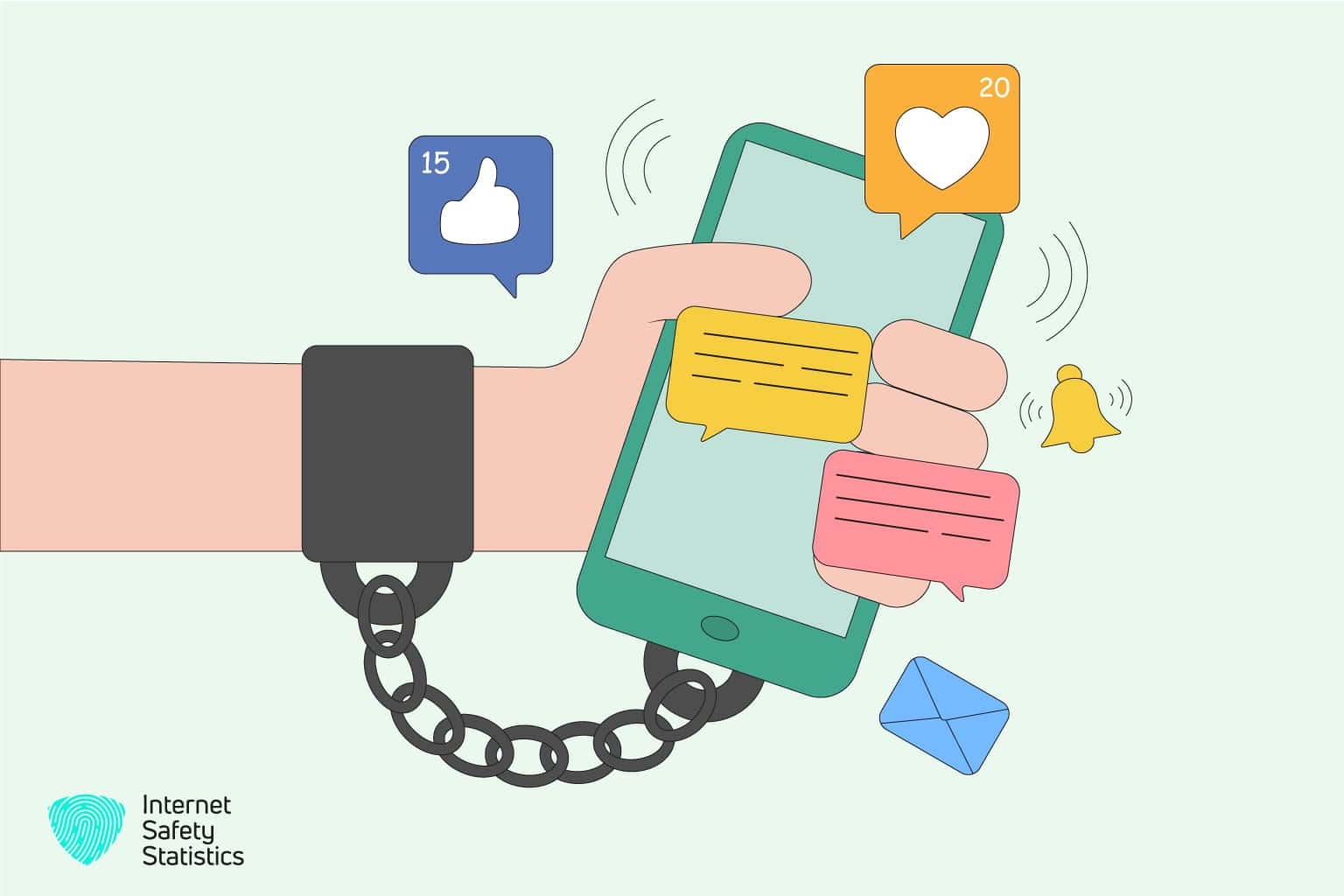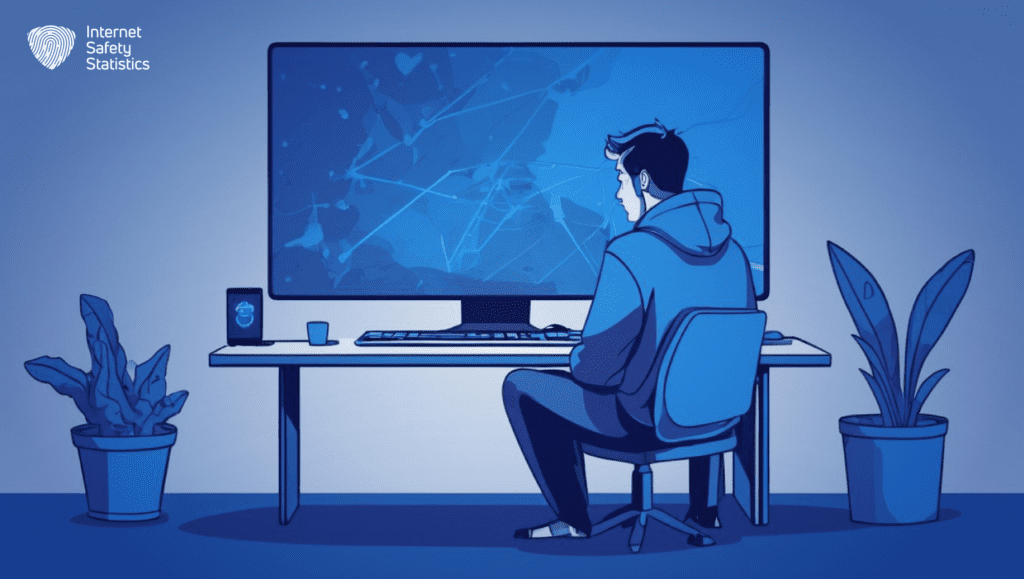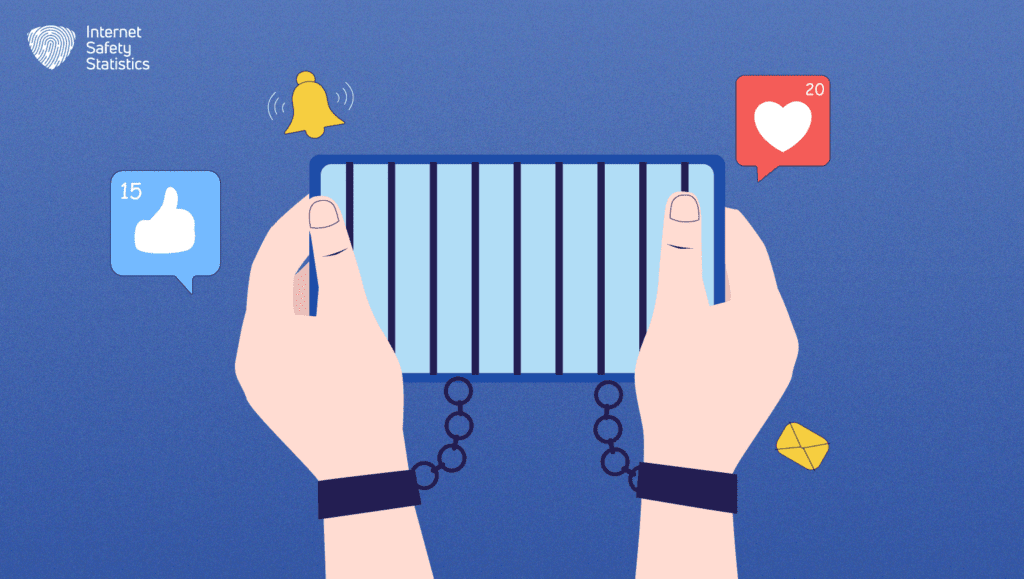
Technology addiction is a growing problem, and if we adults can’t control our own technology use, how can we expect our kids not to get allured into the same behaviour patterns? Psychology experts say the technology addiction problem is not with the devices; it’s with the people who are using them—people who are predisposed to addictions of all kinds and people who have trouble with self-discipline.
What Is Technology Addiction?
Technology addiction refers to a behavioural disorder characterised by excessive and compulsive use of technology devices and digital platforms, leading to negative consequences in various aspects of life. In essence, it involves an uncontrollable urge to engage with smartphones, social media, video games, the internet, and other digital technologies, often resulting in neglect of responsibilities, withdrawal from social interactions, and adverse effects on mental and physical health.
Recognising the signs of technology addiction is the crucial first step towards addressing and managing problematic digital behaviours. Individuals should be mindful of several key indicators that may suggest a dependency on technology.
Obsessive Behaviour with Digital Devices
Obsessive behaviour with digital devices manifests as a constant need to check smartphones, tablets, or computers, even in inappropriate situations such as during meals or conversations. This compulsion often extends to responding to notifications or messages immediately, regardless of the time of day. Individuals may find it challenging to focus on tasks or conversations without intermittently checking their devices, indicating a deeper reliance on digital interactions.
Constant Craving for Social Media Validation
A constant craving for social media validation is a significant red flag. This craving is characterised by seeking validation or self-worth based on the number of likes, comments, or shares received on social media posts. Consequently, individuals may experience feelings of anxiety or inadequacy when posts fail to garner expected levels of engagement or attention. This obsession with maintaining a certain online image or persona can lead to excessive time spent crafting and curating social media content.
Understanding the Dopamine Effect
Understanding the dopamine effect is crucial in recognising technology addiction. Many individuals seek out digital interactions and notifications for the temporary pleasure or “dopamine hit” they provide. This cycle of anticipation, satisfaction, and craving mirrors addictive behaviours associated with substances or gambling. Technology may become a coping mechanism to alleviate boredom, stress, or negative emotions, leading to habitual and compulsive usage patterns.
Neglecting Responsibilities and Social Interactions
Neglecting responsibilities and social interactions is another hallmark of technology addiction. Individuals may prioritise digital activities over real-life obligations such as work, school, or household tasks. Consequently, they may withdraw from face-to-face interactions or social events in favour of online communication and virtual interactions, leading to disruptions in personal relationships or conflicts.
Physical and Emotional Symptoms
Physical and emotional symptoms may also indicate technology addiction. These symptoms include physical discomfort or strain, such as eye strain, headaches, or musculoskeletal issues, from prolonged screen time. Additionally, individuals may experience restlessness, irritability, or anxiety when unable to access digital devices or internet connectivity. Changes in sleep patterns, such as insomnia or disrupted sleep, may also occur due to late-night screen use or digital stimulation before bedtime.
Difficulty Setting Boundaries and Limitations
Difficulty setting boundaries and limitations is a common challenge for individuals struggling with technology addiction. Despite recognising its negative impact, individuals may find it challenging to adhere to self-imposed restrictions or guidelines regarding technology usage. They may rationalise excessive screen time as necessary for work, entertainment, or staying connected, feeling a sense of loss or discomfort when attempting to disconnect from digital devices or engage in non-digital activities.
Assessing Your Relationship with Technology

Today, there is no question that most of us need our smartphones and computers for work situations or even just to keep abreast of today’s culture. There’s also no question that as we use these tools properly, they can make our lives easier and solve all kinds of problems. But, if abused, they can create problems as well. As is the case with everything else, moderation is the key. We must not allow ourselves to be so reliant on them that they take over our lives.
Dr Kimberly Young’s insights
Dr Kimberly Young, director of the Centre for Internet Addiction, says how much technology use is too much is not the same for everyone, just like drinking alcohol. People have different tolerance levels than others. While some become addicted by engaging in specific drinking habits, others don’t become addicted, and it’s the same with technology use. “What we focus on instead is the effects and symptoms caused by a person’s relationship to the Internet,” Dr Young said.
She recommends taking an honest look at whether your technology tools control you (how dependent are you on them?) or if you have control over their use. Can you set them aside and ignore them while being present for your family? Determine honestly and objectively how your phone and other devices impact your relationships, stress levels, family time, and work efficiency. In today’s world, technology is not easy to eliminate because it makes communication and doing business so much easier and more efficient. Instead of trying to eliminate it or even reduce its use, Young recommends finding healthy ways to use technology by making a conscious effort to change your relationship with it.
Tips for Lessening Technology’s Hold Over You

Reducing technology’s hold over you requires conscious effort and a commitment to establishing healthier habits. Here are some tips to help lessen technology’s grip:
- Set Boundaries and Limits:
- Establish specific times of the day when you will be “screen-free” or limit your technology use.
- Use features like app timers and screen time controls on your devices to enforce limits on usage.
- Practice Mindfulness:
- Be mindful of your digital habits and how they impact your mood, productivity, and well-being.
- Take regular breaks from technology to engage in activities that promote mindfulness, such as meditation, deep breathing exercises, or spending time in nature.
- Create Tech-Free Zones:
- Designate certain areas of your home, such as the bedroom or dining room, as tech-free zones to promote relaxation and better sleep quality.
- Encourage face-to-face interactions and quality time with loved ones by keeping devices out of these designated spaces.
- Limit Notifications:
- Disable non-essential notifications on your devices to reduce distractions and minimise the urge to constantly check your phone or computer.
- Prioritise notifications from important contacts or apps that require immediate attention.
- Set Realistic Goals:
- Set achievable goals for reducing your technology use, such as limiting social media browsing to a certain amount of time per day or checking emails only at specific intervals.
- Celebrate small victories and milestones as you work towards lessening technology’s hold over you.
- Find Offline Activities:
- Explore hobbies and activities that do not involve technology, such as reading, gardening, cooking, or pursuing creative projects.
- Engage in physical activities like exercise, sports, or outdoor adventures to disconnect from screens and promote overall well-being.
- Practice Digital Detoxes:
- Take periodic breaks from technology by participating in digital detox challenges or unplugging for a designated period, such as a weekend or vacation.
- Use this time to reconnect with yourself, engage in meaningful experiences, and foster deeper connections with others.
- Seek Support and Accountability:
- Share your goals and challenges with friends, family members, or support groups who can offer encouragement, accountability, and practical tips for reducing technology dependence.
- Consider seeking professional help if you struggle to control your technology use and experience significant negative consequences in your life.
What Can You Do for Others?
To help other family members change the hold their smartphones and devices have over them to a more balanced, healthy relationship, Stephanie Donaldson-Pressman, Clinical Director for the New England Center for Pediatric Psychology, has several suggestions, particularly for parents of teens and children.
- Have a pre-determined place in your home where cell phones are placed when every family member walks in the door. This way, they are separated from their phone, as are you, and the phone does not become an extension of anyone’s anatomy.
- When you want to have a conversation with someone close to you, have a rule that everyone turns off their phones so there are no interruptions. If someone forgets (or refuses) to turn their phone off and it vibrates or rings, stop the conversation, ask the person to turn it off and then carry on with the discussion, making sure they understand they can turn it back on when the conversation has ended. This, at the very least, gives everyone a brief break from the tyranny of their smartphones.
One technology expert, Erik Fransen, of KTH Royal Institute of Technology in Stockholm, says the distraction of smartphones is affecting our short-term memory, particularly in our children. “Working memory enables us to filter out information and find what we need in the communication…it’s also a limited resource,” Fransen said.
According to his research, short-term memory, which he calls working memory, can carry only three to four pieces of information at a time. When another piece of information is added, such as the vibration or ding of a smartphone, we are distracted enough that we lose our ability to process the information we have been holding.
So, turning off the power on smartphones during specified times will allow the brain to function as it should, at least during that time period. That’s why it’s especially important to have your teenagers turn off their phones during conversations with you so they will remember any instructions you are giving them. Otherwise, the distraction of their phones may actually cause them to lose that information.
Technology Addiction Statistics

The following statistics paint a concerning picture, urging us to reconsider our digital habits.
First, the Numbers Speak
- Imagine over 210 million people worldwide struggling with social media and internet addiction—that’s almost the population of Brazil! (University of Michigan).
- We spend close to 9 hours a day staring at screens, equivalent to dedicating almost a full workday to our digital devices (various sources).
- The average person unlocks their phone a mind-boggling 150 times a day, constantly seeking that dopamine hit (various sources).
- Half of our teenagers self-report feeling addicted to their mobile devices, and 27% of parents admit to the same struggle (Tikvah Lake, Florida).
But It Gets More Specific
- While internet addiction affects around 1-8% of the population, specific forms like cell phone addiction hit 4.1% of males and 1.5% of females (NCBI).
- Heavy social media use has been linked to increased anxiety and depression, especially in young adults (various sources).
- Gaming isn’t exempt, with the World Health Organisation recognising “gaming disorder” as a condition affecting 0.3-1% of gamers.
COVID-19: Fueling the Flames
The pandemic exacerbated the issue, with internet addiction rising in the general population. Nearly half of the participants in a study reported increased severity of their addiction (NCBI).
It’s Not Just Numbers, It’s Impact
Technology addiction wreaks havoc on mental health, with anxiety, depression, loneliness, and sleep disturbances becoming unwelcome companions. Studies show a negative impact on academic performance, social relationships, and even physical health.
These statistics are a wake-up call, not a sentence. Addiction severity varies, and technology itself isn’t the enemy. It’s all about mindful and responsible use.
Seek Help, Break Free
If you or someone you know is struggling, know that you’re not alone. Mental health professionals, support groups, and digital wellness tools offer valuable support. Let’s reclaim our lives from the constant scroll and build a healthier relationship with technology.
Share this article, start a conversation, and together, let’s navigate the digital age with awareness and well-being at the forefront.
